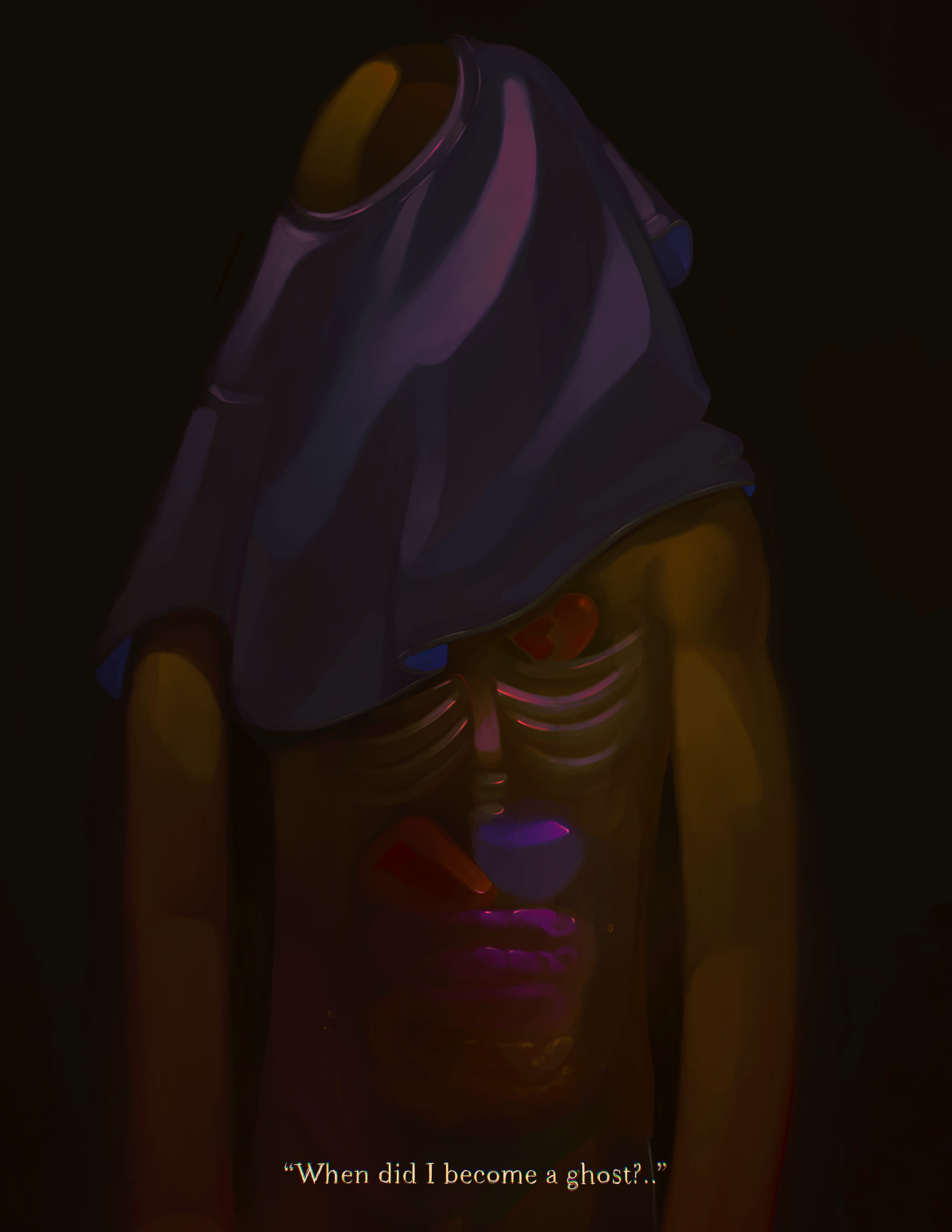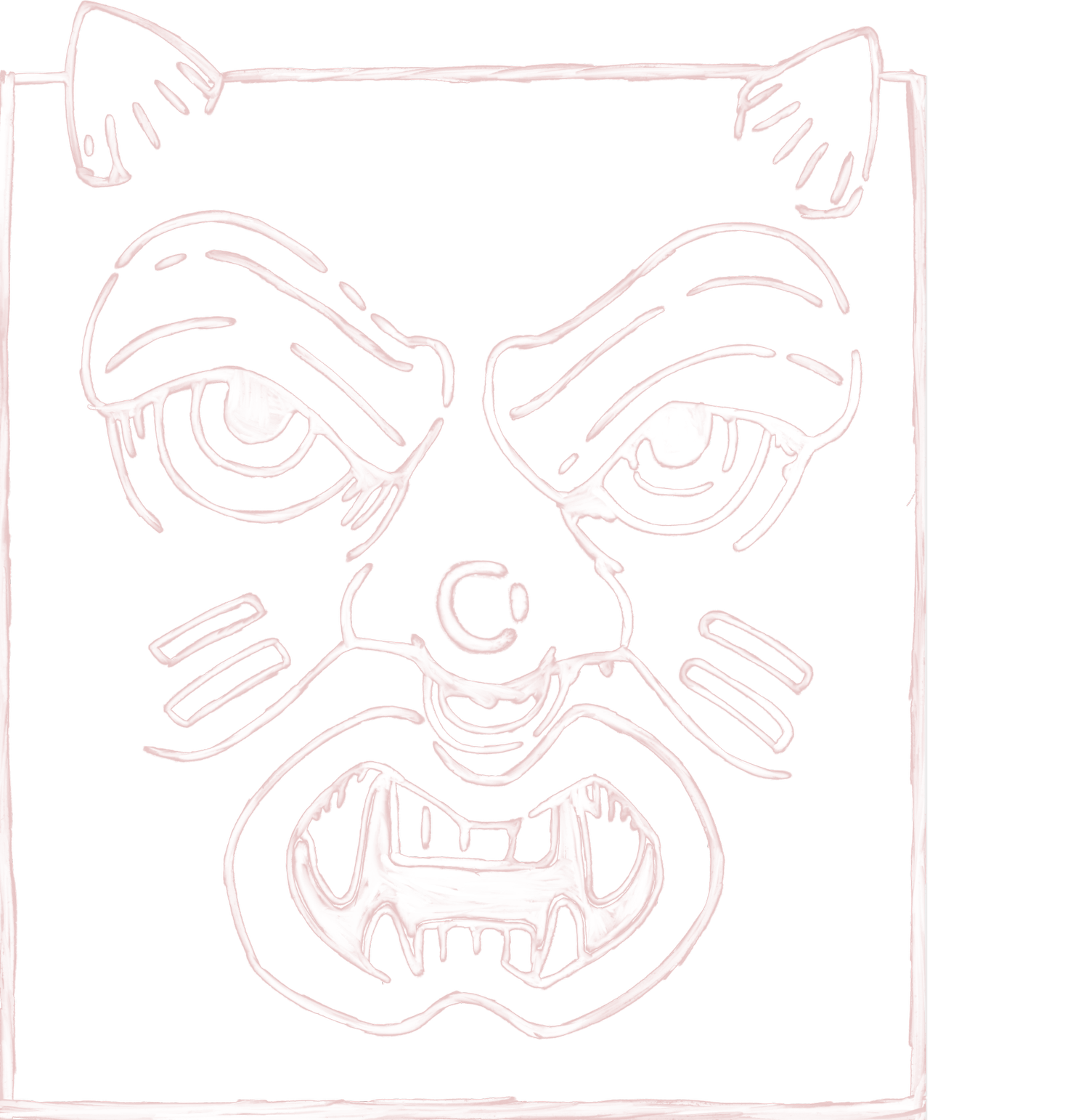 Image 1 of 1
Image 1 of 1


“When did I become a ghost?..”
by Goliath
In this haunting and introspective piece, the child stands adrift in the void of space, his body translucent, his vital organs glowing softly like distant stars trapped within him. Over his head drapes a white shirt, its fabric billowing faintly as if caught in an unfelt breeze—a spectral shroud that obscures his face and casts him as both mourner and apparition. The emptiness around him is absolute, a vacuum that swallows sound and light, amplifying the eerie luminosity of his inner self.
The transparency of his form speaks to a fading presence, a soul questioning its own tangibility. His glowing organs—heart, lungs, ribs—pulse with a fragile light, a stark contrast to the darkness that envelops him. They are not just anatomical markers but symbols of his humanity, proof that he still feels, even as he wonders when he began to disappear.
The white shirt, ghostly and weightless, becomes a metaphor for invisibility, for the ways we cloak ourselves even as we yearn to be seen. Its folds suggest movement in stillness, a life suspended between existence and erasure. The child’s pose is passive, almost resigned, as if he has only just realized he’s become a specter in his own story.
This piece is a meditation on self-perception and the quiet erosion of identity. It asks when, exactly, we begin to feel like ghosts—when our voices go unheard, our presence unnoticed, our essence dimmed by time or neglect. The child, caught between visibility and void, is a mirror to the parts of ourselves that flicker in the dark, insisting, I am still here. I am still alive.
Through its stark contrasts and spectral imagery, the work invites reflection on the fragility of presence and the haunting question: When did I become a ghost?..
by Goliath
In this haunting and introspective piece, the child stands adrift in the void of space, his body translucent, his vital organs glowing softly like distant stars trapped within him. Over his head drapes a white shirt, its fabric billowing faintly as if caught in an unfelt breeze—a spectral shroud that obscures his face and casts him as both mourner and apparition. The emptiness around him is absolute, a vacuum that swallows sound and light, amplifying the eerie luminosity of his inner self.
The transparency of his form speaks to a fading presence, a soul questioning its own tangibility. His glowing organs—heart, lungs, ribs—pulse with a fragile light, a stark contrast to the darkness that envelops him. They are not just anatomical markers but symbols of his humanity, proof that he still feels, even as he wonders when he began to disappear.
The white shirt, ghostly and weightless, becomes a metaphor for invisibility, for the ways we cloak ourselves even as we yearn to be seen. Its folds suggest movement in stillness, a life suspended between existence and erasure. The child’s pose is passive, almost resigned, as if he has only just realized he’s become a specter in his own story.
This piece is a meditation on self-perception and the quiet erosion of identity. It asks when, exactly, we begin to feel like ghosts—when our voices go unheard, our presence unnoticed, our essence dimmed by time or neglect. The child, caught between visibility and void, is a mirror to the parts of ourselves that flicker in the dark, insisting, I am still here. I am still alive.
Through its stark contrasts and spectral imagery, the work invites reflection on the fragility of presence and the haunting question: When did I become a ghost?..
